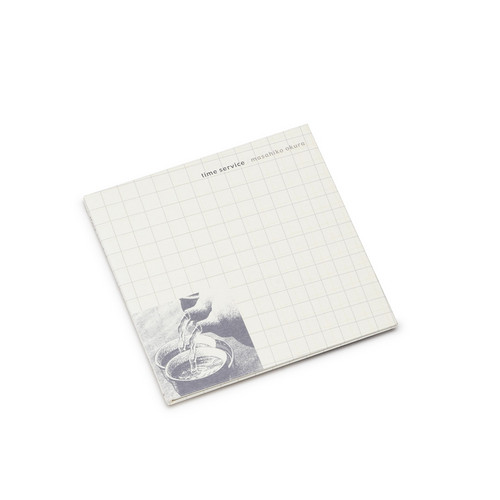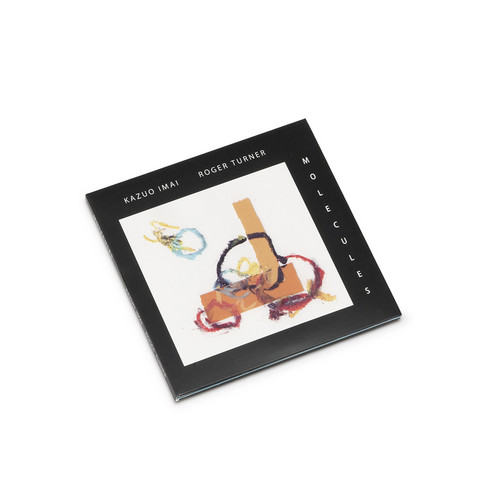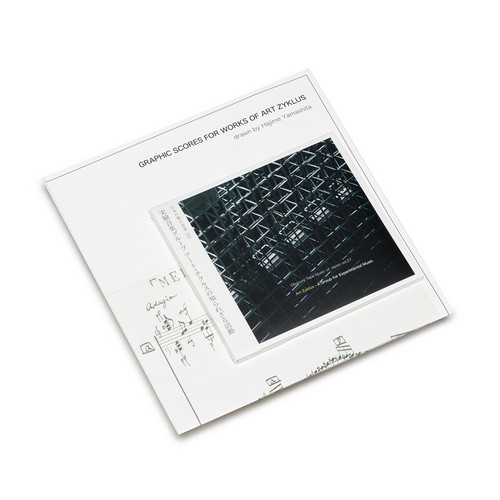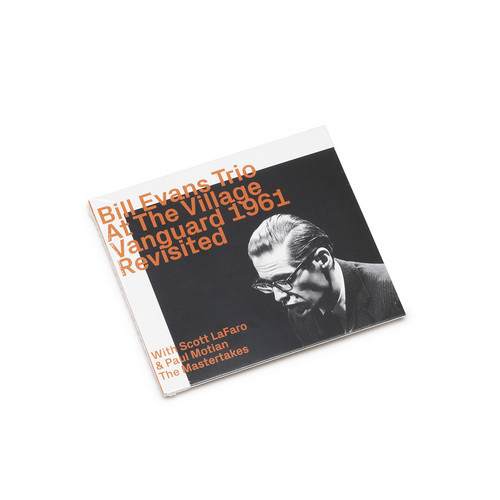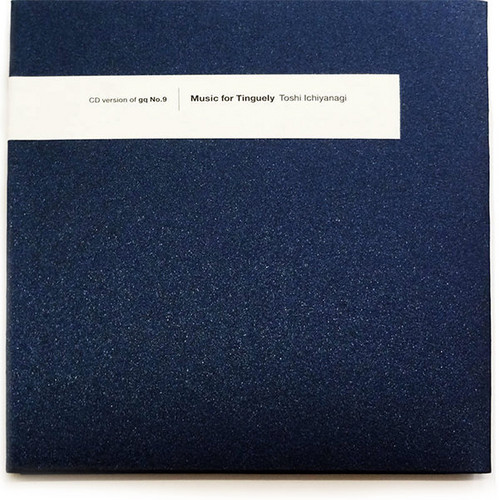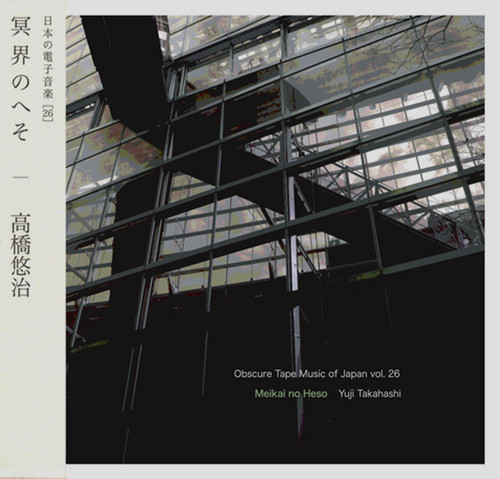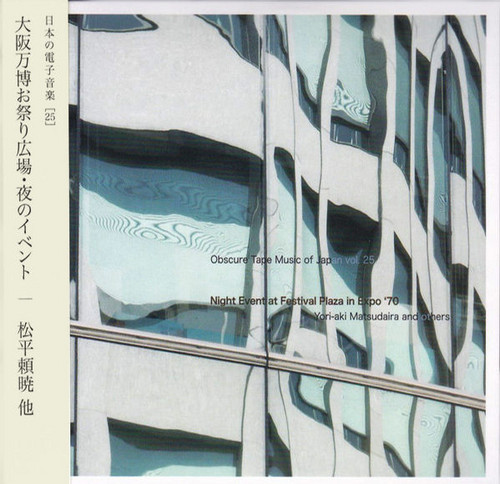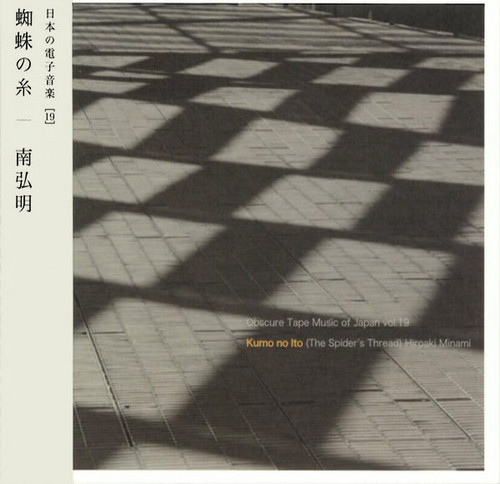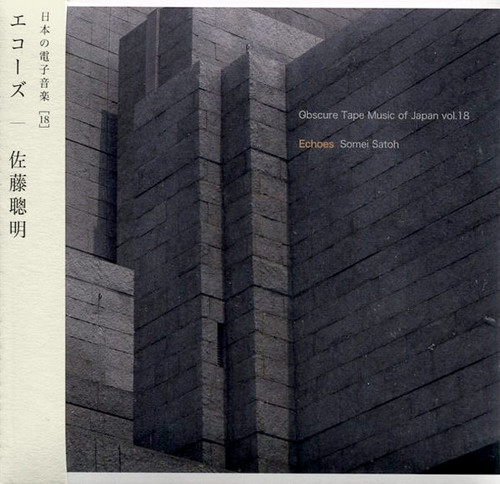Back in stock
Time service
Over the past few years, alto sax player Masahiko Okura has led an astonishingly full and varied musical life. Active as a soloist, as leader of the jazz-rock band Gnu, and as a member of the improvisational trio Bject (with Tetuzi Akiyama and Utah Kawasaki), he also collaborates with many other improvisers, including Otomo Yoshihide, Taku Sugimoto, Ami Yoshida, Axel Dörner, Alessandro Bosetti, Werner Dafeldecker, and Günter Müller. With the recent addition to his repertoire of two more instrume…
In case of fire take the stairs
Kaffe Matthews (laptop), Andrea Neumann (inside piano), Sachiko M (sinewaves, contact microphones). Recorded live in Tokyo, 3/17/02. Although I and II include two and three tracks, respectively, each is a single work. They are divided into multiple tracks for listeners' convenience. Kaffe Matthews created her sound by live-sampling and processing her own and the other musicians' sounds as they played.
Side guitar
Toshimaru Nakamura's main instrument of late has been what he calls the 'no-input mixing board.' Rather than input external sound sources into the mixer, he treats it as a self-contained instrument by controlling its internal feedback -- the result being a truly original performance style. Over the past four years, Nakamura has released the solo NIMB CDs No-Input Mixing Board (on the Zero Gravity label), No-Input Mixing Board 2 (a bruit secret), Vehicle (cubic music), and No-Input Mixing Board […
Molecules
Limited edition of 400. This masterful performance was born of the meeting of two master improvisers, Kazuo Imai from Japan and Roger Turner from the UK. Imai, who studied with Masayuki Takayanagi and Takehisa Kosugi, is one of Japan's leading improvisers and guitarists. Turner is a drummer and percussionist who has been actively performing throughout the world since the beginning of the 1970s. His Japan tour in October 2017 included concerts with Japanese musicians in various locations, includi…
A Group for Experimental Music
In the mid 1960’s, there was a collective of contemporary musicians in Osaka, called Art Zyklus. Because Hajime Yamashita, one of the core members, had sold a part of his privately stored sound source over the Internet, the whole picture of amazing and completely unknown activities was revealed. The release compiled works created by Art Zyklus as well as Yamashita. Worth mentioning is that ‘Music for Electric Metronomes’ by Toshi Ichiyanagi was premiered in Japan. Apart from that, the fact that …
Pratical Concert 1976-78
GAP is an improvisation group which was founded by Kiyohiko Sano, Masaru Soga and Masami Tada in the Mid 1970’s. Gap had only one album on the famous ALM records, and from the early time, they played oscillators and synthesizers, adding to simple self-made instruments, and made a free improvisational performance which is comparable to Taj-Mahal Travellers. Especially for Tada who was under tutelage of Takehisa Kosugi, GAP was a missing-link which lead him from East Bionic Symphonia to Marginal C…
Imaginations of Light + Hallo Rabbit
This fine double LP release combines two full-length albums from the German acid/kraut-folk duo Flute & Voice, which was formed by Mannheim-based multi-instrumentalists Hans Reffert ('Flute') and Hans Brandeis ('Voice'). The debut-LP 'Imaginations Of Light', originally released in 1970 by the legendary Pilz label, features wonderful trippy and progressive folk music with ethnic and even jazzy elements. This LP should appeal to fans of fellow Germans s.a. Witthueser & Westrup and Bröselmaschine, …
Kennlisch
** Edition of 500. Including a 4-page colour booklet with photos and text provided by the Macherey brothers themselves. ** Kënnlisch, one of the rarest haunting psychedelic acid folk LPs from France, was the work of brothers Philippe and Jean-François Macherey. Originally released in 1976 on the mega collectable label Le Kiosque d'Orphée, it contains some of the most beautiful sounds to come out of the 1970s alternative music scene. An instrumental album, it opens with a burst of sunshine vibes…
L'Envol
*In process of stocking. 300 copies limited edition* In his youth days, Gontran lived on the road. He describes himself as a member of the alternative hippie generation, not of those who claimed wanted to change the world, but of those who actually took an alternate way of living. He travelled, took any jobs available to make some money to live wherever he was, and wrote beautiful songs accompaining himself on guitar. From time to time, when the stars aligned, when there was the chance, he would…
At The Village Vanguard 1961, Revisited
'Mention of Motian and LaFaro brings us to this disc, perhaps belatedly. But other than observing that the music is presented here following immaculate and unprecedented sound restoration, what more needs to be said about it? What more, usefully, can be said? The performances are as close to perfection as makes no difference, and as close to immortality, too, and if you are still reading thesenotes, you will not need to be told why.' – Chris May
Executive producer’s notes: 'Once you start to …
Dizzy Gillespie & Charlie Parker At Town Hall 1945, Carnegie Hall 1947 & Birdland 1951 "Revisited"
When Charlie Parker and Dizzy Gillespie went into the recording studio together on 28 February 1945, they had already served a shared apprenticeship in the big bands of Earl Hines and Billy Eckstine, had jammed informally exploring their common interest in adventurous extensions of swing harmonies and reconfigured rhythms, and were, individually and collaboratively, prepared to redirect the course of modern jazz. That session shouldn’t in any way be considered the public “birth” of bebop; those …
Summertime To Spiritual Unity Revisited
Summertime from the LP My Name Is Albert Ayler made me discover Albert Ayler. His unique interpretation of Summertime motivated me to go to Lörrach crossing the border from Switzerland to Germany to listen to the concert of the Albert Ayler Quintet in Lörrach on November 7, 1966. This experience has indoctrinated me forever for the music of Albert Ayler. In 1975 I created the label Hat Hut Records and in 1978 I had the chance, thanks to the support of Joachim Ernst Berendt of South Western Germa…
John Cage Variations + Four6
"I ask how CALATO's use of graphic scores help them break down the divisions between contemporary composition and improvisation? “We started as a noise improvisation band,” they respond. “We spent several years playing together without any kind of parts or scores, just working deeply on listening to each other, reacting and generating a kind of togetherness that made it possible to create live music in a very fast and intuitive way.” Then they started investigating different approaches to compo…
Adam’s Apple To Super Nova "Revisited“
“The word ‘jazz,’ to me, only means I dare you.” - Wayne Shorter
Music for Tinguely
CD only version by the 'GQ' legendary magazine issued in 1970's. Comprised of rare sound materials from Toshi Ichiyanagi's Music For Tinguely, released here for the first time ever. Also includes the track released on OPA 005CD. Toshi Ichiyanagi is a well-renowned Japanese avant-garde composer who made brilliant pieces of tape music. Most of his works have not been issued on CD, or have only been issued in very small editions. Housed in a cardboard paper gatefold sleeve. Newly-written liner note…
Obscure Tape Music Of Japan Vol. 26: Meikai no Heso
A collection of small tape music pieces by the legendary composer and pianist Yuji Takahashi. All of them are premiere release on disc.tr.1 Meikai no Heso (The Umbilicus of Limbo, 1963) It is also known as Window to Antonin Artaud, or The Umbilicus of Limbo. it was performed in a version of tape and instruments - poetry reading of the French poet Antonin Artaud, which was modified on the tape, and bass instruments as well as percussion instruments. This is a live recording of Musicians Group: Ne…
Obscure Tape Music Of Japan Vol. 25: Night Event At Festival Plaza In Expo '70
At the World Exposition held in Osaka in 1970, many multi-media works such as experimental music were presented at different pavilions. Some of the recordings were released on discs, however, the information was lacking what music was produced for what event held at the Festival Plaza. Although many sound sources were lost, we managed to analyze some part of treasurable recordings that were still available! tr.1 "Flag, Flag, Flag and Plaza of Light" (music: Yori-aki Matsudaira) The event was a …
Shikisokuzekuu-Kuusokuzeshiki
The details of Shikisokuzekuu-Kuusokuzeshiki (1964) are unknown except that it was created at the NHK electronic music studio. According to Toshi Ichiyanagi, there were various discussions about the title, but it would seem to have been eventually broadcasted on the radio with the title Kuu after a producer renamed it. Here, the original title is used, following Ichiyanagi's initial intention. This work has no relation to the short experimental film Shikisokuzekuu (1974), produced by filmmaker T…
Obscure Tape Music of Japan, Vol. 19: Kumo no Ito (The Spider's Thread)
"Kumo no Ito" (trans. "The Spider's Thread): "In 1977 I started the project of a musical piece for a female narrator and 4-channel electronic sounds using the text of the well-known Akutagawa novel. I worked with a hand-made analog synthesizer which had been installed two years before in my home studio in Tokyo. Needless to say, the editing was done without digital machines. I worked with the recorded tapes together with scissors and splicing tape. It was the resonance-adding apparatus tha…
Echoes
*2022 stock* "'Emerald Tablet' was recorded at the NHK electronic-music studio in 1978. It is made up of only the sonic ingredients of a tubular bell, cymbals, and 'kin,' a largish-sized bell used for Buddhist memorial services in Japan. The attack of the sound of each instrument was eliminated, and the work was taped through repeated overdubbing. This produced a variety of beautiful harmonics that otherwise could not be produced from a single instrument's sound, and the interference of harmonic…
